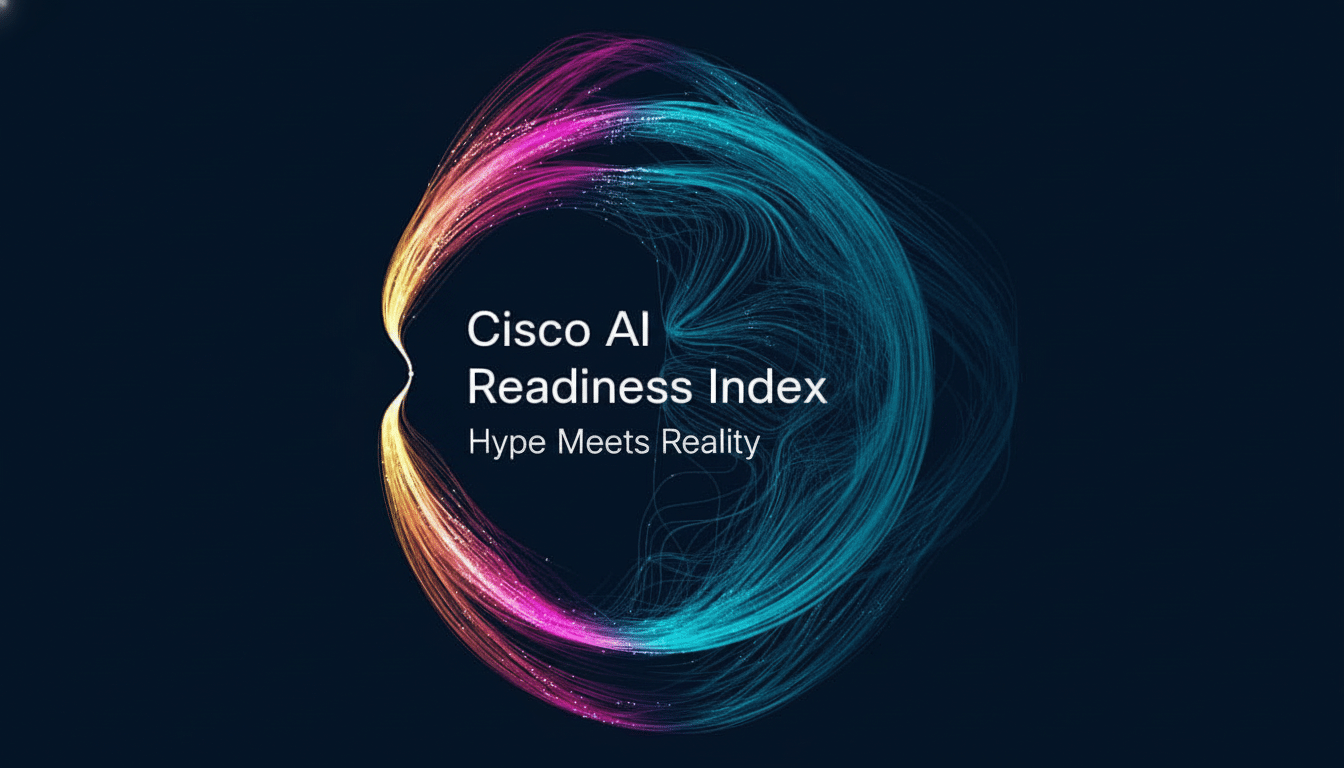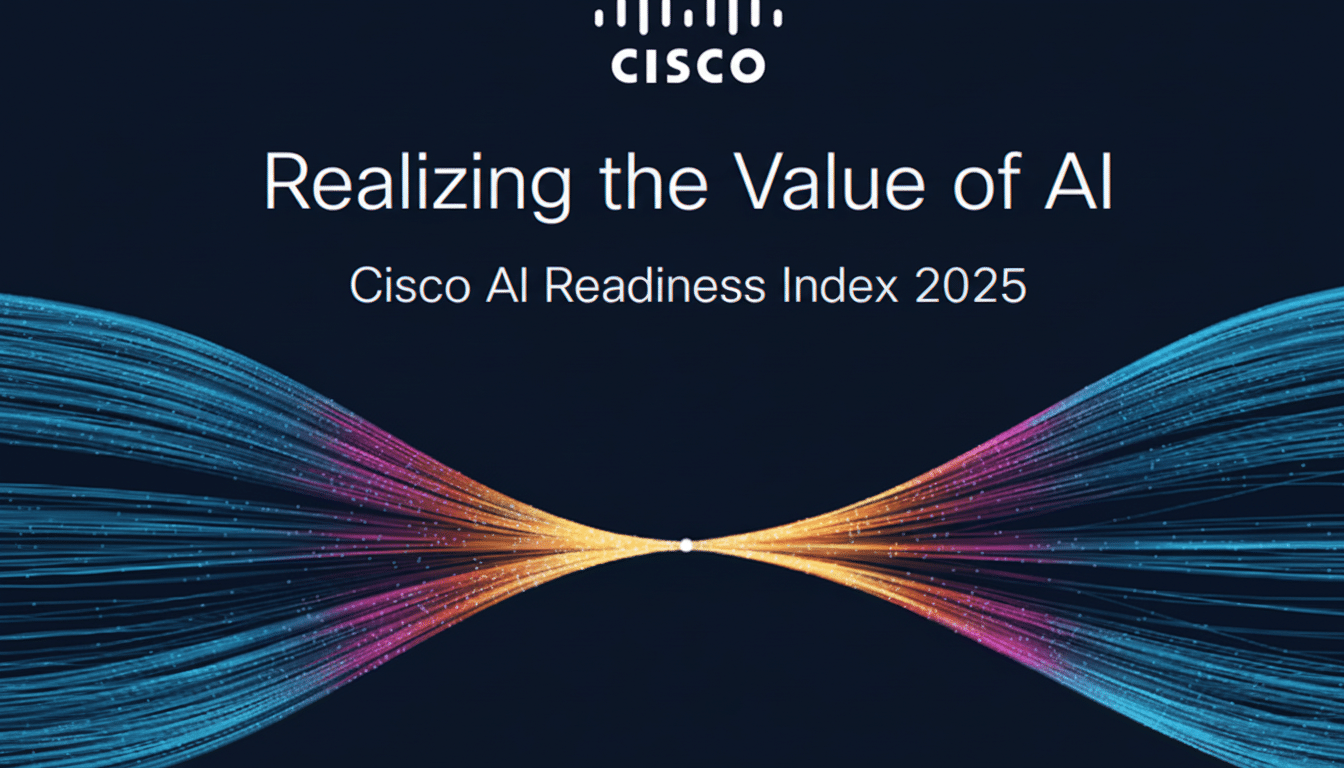Lots of companies are flying AI into the cockpit. Hardly anyone is benefiting. A small band is, and the chasm between them and everybody else is growing. A series of recent studies by MIT and Atlassian show that the vast majority of AI projects stagnate or fail to yield meaningful benefits. But a sizable minority is seeing clearly articulated ROI. Not that the winners win by luck or have special access to the model — they are just better at running the entire system around AI.
Discipline Behind Early ROI in Enterprise AI Programs
Cisco’s most recent AI Readiness Index dubs these outperformers “Pacesetters” and they comprise some 13%-14% of organizations surveyed over multiple years. Their advantage is managerial, not magical. Almost all of them (99 percent) have a formal AI roadmap compared to just over half of others, and they are investing across strategy, data, infrastructure, governance and people together – not in siloed pockets. They think of AI as a new operating system for their business, not a gadget for one team in the organization.
- Discipline Behind Early ROI in Enterprise AI Programs
- Why Data Fundamentals Trump Shiny AI Demos and Hype
- Trust Is Built with Secure-by-Design AI Practices
- Choose Boring AI Problems That Matter for ROI
- Run AI as a Product with Ownership and Metrics
- Build vs. Buy with Clear, Measurable AI Economics
- Invest in People and Process Change for AI
- A Real-World Playbook for Joining the AI Winner Minority

Why Data Fundamentals Trump Shiny AI Demos and Hype
Winners start with the plumbing. They inventory critical data, remediate quality problems and ascertain lineage prior to selecting models. RA-SEP and FAS are only implemented after DA&SCs, assuming FAs. It’s a mindset you spot in the financial services and logistics leaders who have publicly described extensive data applications — fraud models, pricing engines and route optimizers only function if internal data is credible and current. The lesson: Your data supply chain is the product.
Trust Is Built with Secure-by-Design AI Practices
Security isn’t an add-on for Pacesetters — it’s built into the promise of value. Cisco’s findings indicate that they are much more likely to be very aware of those AI-focused threats and have both controls around agent behavior as well as data access. And that matters as adversaries ramp up, a fact underscored by the discovery last year from top AI labs that threat actors are relying on generative tools to make cyber campaigns more efficient. The leaders would be the ones to create tests based on frameworks like NIST’s AI Risk Management Framework, or ISO guidance, run red team exercises against prompts and agents, and put in place enough audit trails so that they can say who did what when with what data.
Choose Boring AI Problems That Matter for ROI
The best AI can be invisible.
Forrester’s analysis signals at least some behind-the-scenes applications—customer support deflection, the processing of invoices, supply chain forecasting—as the fastest ROI paths. Look at route optimization: UPS has claimed that every year, its ORION system, which optimizes delivery routes for the company’s 55,000-plus drivers, saves hundreds of millions of miles driven and millions of gallons of fuel — an iconoclastic form of AI silently accruing value. The fraud detection at card networks and anomaly detection in manufacturing plants look alike — mundane on the surface, but material to P&L.

Run AI as a Product with Ownership and Metrics
The best performers consider their models as living products with owners, SLAs, and feedback loops. They do MLOps and LLMOps: versioned model registries, automated evaluations, monitoring for drift and toxicity, structured human-in-the-loop review where stakes are high. Most important, they gauge business outcomes — cost per ticket, time to resolution, conversion lift — not vanity metrics like prompt speed. This product discipline is one of the reasons many organizations still aren’t actually seeing efficiency gains, a point underscored by Atlassian research: experimentation without ownership scales poorly.
Build vs. Buy with Clear, Measurable AI Economics
AI winners are practical about the stack. They’ll purchase where the market is mature — vector databases, observability, governance — and then reserve custom work for differentiating workflows. Looking deeper into ventures brought to market and venture analyses that include the most recent enterprise buyer lists from a16z, we see spend clustering around niche automation and infrastructure products that accelerate time to value. Leaders are actively negotiating model optionality, retaining a second-source strategy, and are benchmarking total cost of ownership against API-based models vs. open weights vs. fine-tunes. The lodestar is unit economics, not technical cleanliness.
Invest in People and Process Change for AI
Just technology alone does not move the needle. Two separate studies, one by SAS and another by IDC, further proved the point that trust and adoption are perpetual sticking points. Pacesetters budget for training, refresh roles and incentives, and redesign workflows so that AI is woven into how work gets accomplished. They spell out decision rights and when human review is needed, and provide clear lines of escalation. In other words, governance becomes usable — not just something to put in a binder of policies.
A Real-World Playbook for Joining the AI Winner Minority
Begin with a boomer of a problem associated with a P&L metric and baseline it. Clean and control data required end-to-end. Do not pick models first, select them last with security instrumentation and evaluation harnesses in place. Pilot with a unit, bake in change management and instrument results before scaling. Establish a model registry, AI failure incident response and cost dashboard. Repeat in adjacent workflows. Over time, this builds into an operating system for your business – the calling card of those winning big with AI.

